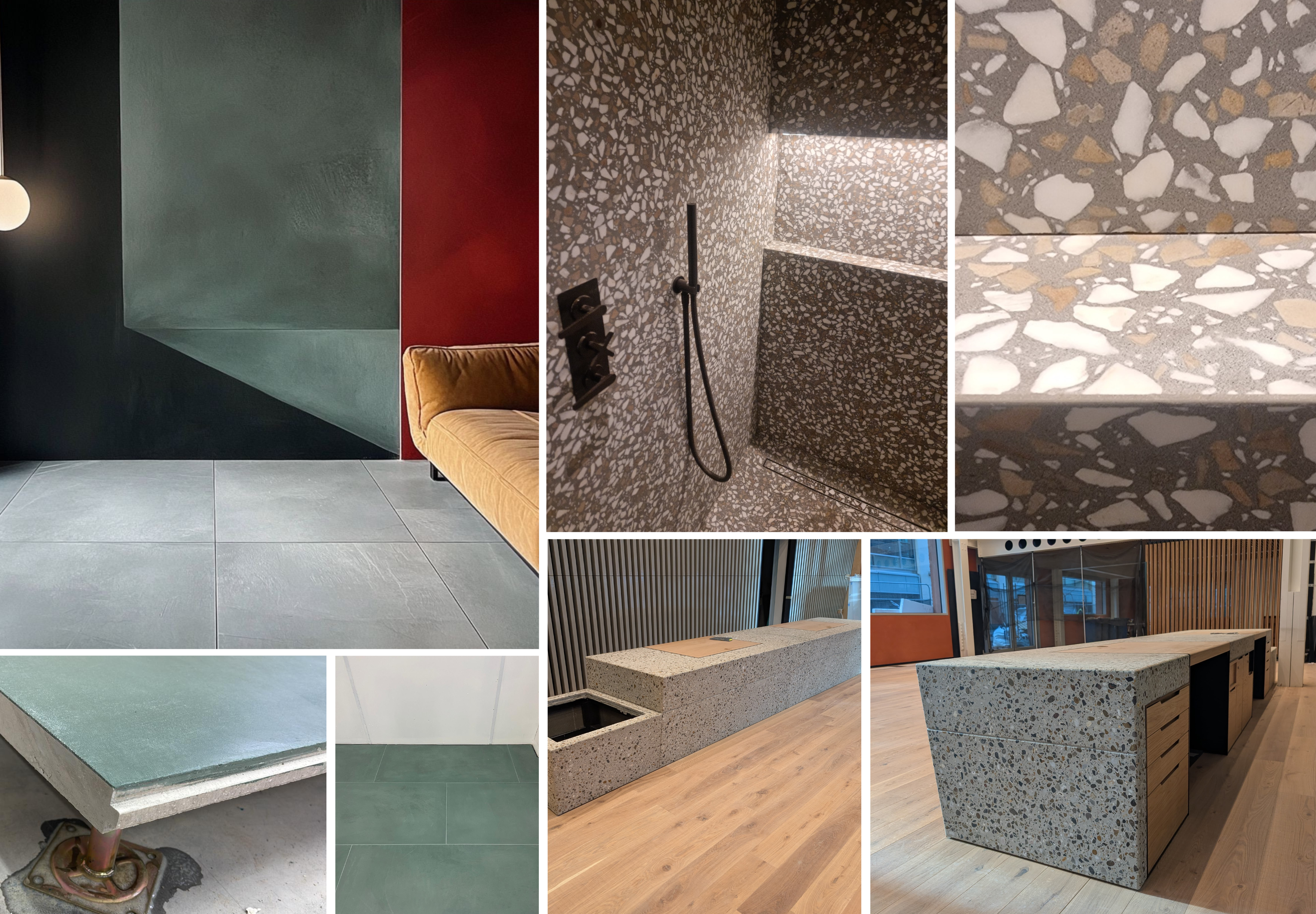
Durable Concrete Finishes for Off-Site Construction
The growing demand for off-site construction is transforming the way we approach architecture and design. The concrete finishes Aspida and Armis, applied directly to panels, meet these needs by offering durability, precision, and versatility, tailored for off-site workflows. These innovative solutions are trusted by architects, designers, and developers.
Aspida
Aspida combines the beauty of traditional concrete finishes with the precision of modern engineering. With a thin overlay of 2mm to 5mm, Aspida introduces versatility and elegance into pre-finished panels for modular and off-site construction. Aspida’s sleek finish can be tailored to any colour, adding warmth and authenticity to contemporary interiors.
Key Benefits for Off-Site Applications:
- Durable Concrete Panels: Designed to perform under thermal and structural stress, ensuring long-lasting results.
- Pre-Finished Efficiency: Ready for immediate installation, reducing the need for additional on-site work.
- Lightweight and Flexible: Ideal for projects with height or weight restrictions, offering strength without unnecessary bulk.
Armis
Armis is designed for applications demanding more robust finishes. With thicknesses ranging from 10mm to 15mm, it combines strength, visual appeal, and functionality.
Features Tailored to Off-Site Construction:
- High Durability: Compressive strength of up to 44.8 MPa ensures resilience in demanding environments.
- Customisable Finishes: Choose from honed, polished, or textured finishes to match every design vision.
- Rapid Deployment: Panels are ready for foot traffic within hours, accelerating project timelines.
Meeting the Industry’s Needs with Aspida and Armis
Aspida and Armis address critical challenges in modular construction. Designed to meet the needs of a fast-paced industry, they offer solutions that combine practicality with high-end aesthetics. CO2 emissions are lower compared to traditional cement, supporting environmentally conscious building practices. Their adaptable designs ensure that architects and developers can create stunning results without compromising on efficiency or performance.

